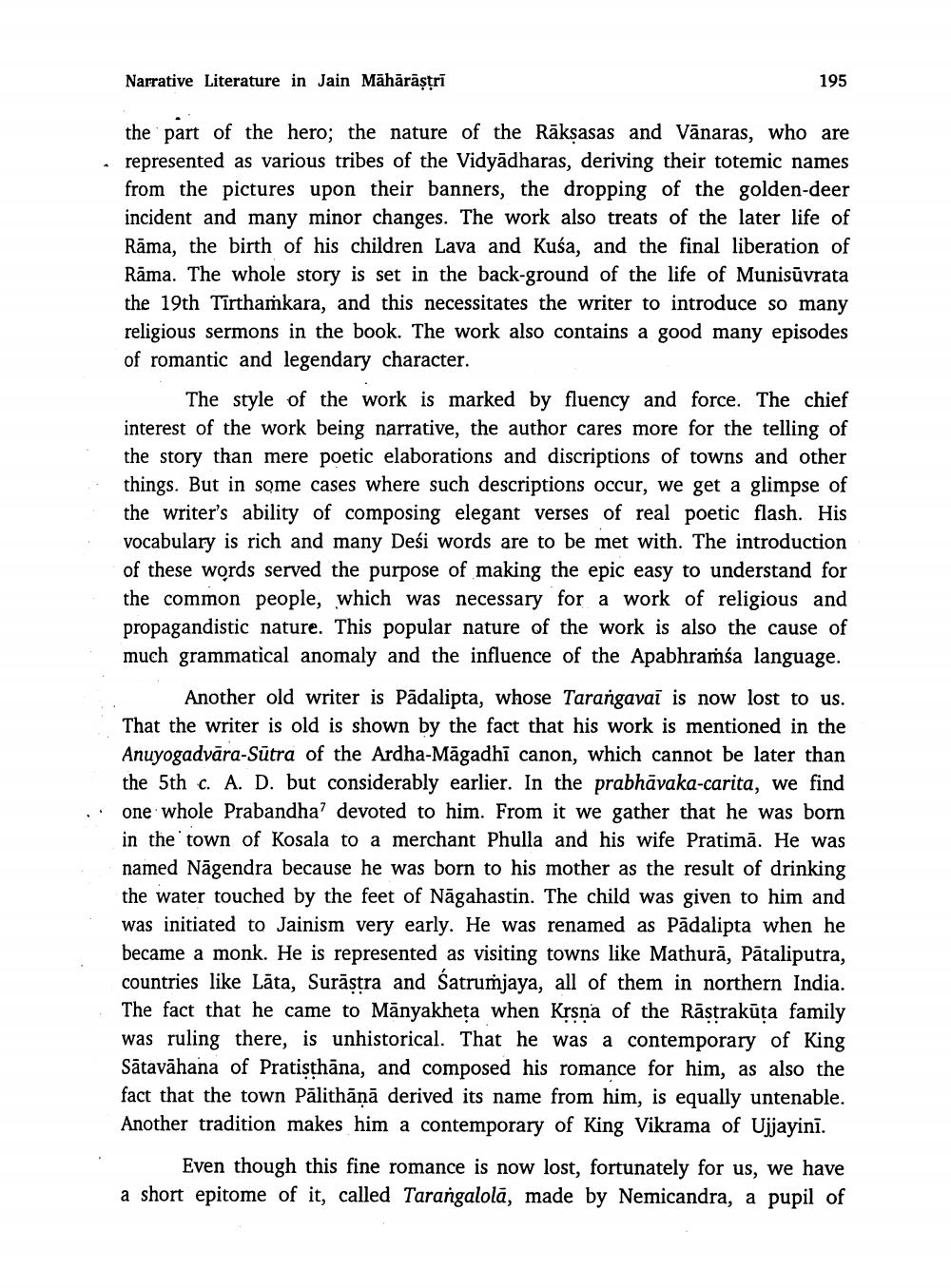________________
Narrative Literature in Jain Māhārāștri
195
the part of the hero; the nature of the Rāksasas and Vānaras, who are represented as various tribes of the Vidyādharas, deriving their totemic names from the pictures upon their banners, the dropping of the golden-deer incident and many minor changes. The work also treats of the later life of Rāma, the birth of his children Lava and Kusa, and the final liberation of Rāma. The whole story is set in the back-ground of the life of Munisūvrata the 19th Tirthamkara, and this necessitates the writer to introduce so many religious sermons in the book. The work also contains a good many episodes of romantic and legendary character.
The style of the work is marked by fluency and force. The chief interest of the work being narrative, the author cares more for the telling of the story than mere poetic elaborations and discriptions of towns and other things. But in some cases where such descriptions occur, we get a glimpse of the writer's ability of composing elegant verses of real poetic flash. His vocabulary is rich and many Deśi words are to be met with. The introduction of these words served the purpose of making the epic easy to understand for the common people, which was necessary for a work of religious and propagandistic nature. This popular nature of the work is also the cause of much grammatical anomaly and the influence of the Apabhraíśa language.
Another old writer is Padalipta, whose Tarangavai is now lost to us. That the writer is old is shown by the fact that his work is mentioned in the Anuyogadvāra-Sūtra of the Ardha-Māgadhi canon, which cannot be later than the 5th c. A. D. but considerably earlier. In the prabhāvaka-carita, we find one whole Prabandha' devoted to him. From it we gather that he was born in the town of Kosala to a merchant Phulla and his wife Pratimā. He was named Nāgendra because he was born to his mother as the result of drinking the water touched by the feet of Nāgahastin. The child was given to him and was initiated to Jainism very early. He was renamed as Pādalipta when he became a monk. He is represented as visiting towns like Mathurā, Pātaliputra, countries like Lāta, Surāstra and Satrumjaya, all of them in northern India. The fact that he came to Mānyakheta when Krsna of the Rāstrakūta family was ruling there, is unhistorical. That he was a contemporary of King Sātavāhana of Pratisthāna, and composed his romance for him, as also the fact that the town Pälithānā derived its name from him, is equally untenable. Another tradition makes him a contemporary of King Vikrama of Ujjayini.
Even though this fine romance is now lost, fortunately for us, we have a short epitome of it, called Tarangalolā, made by Nemicandra, a pupil of




